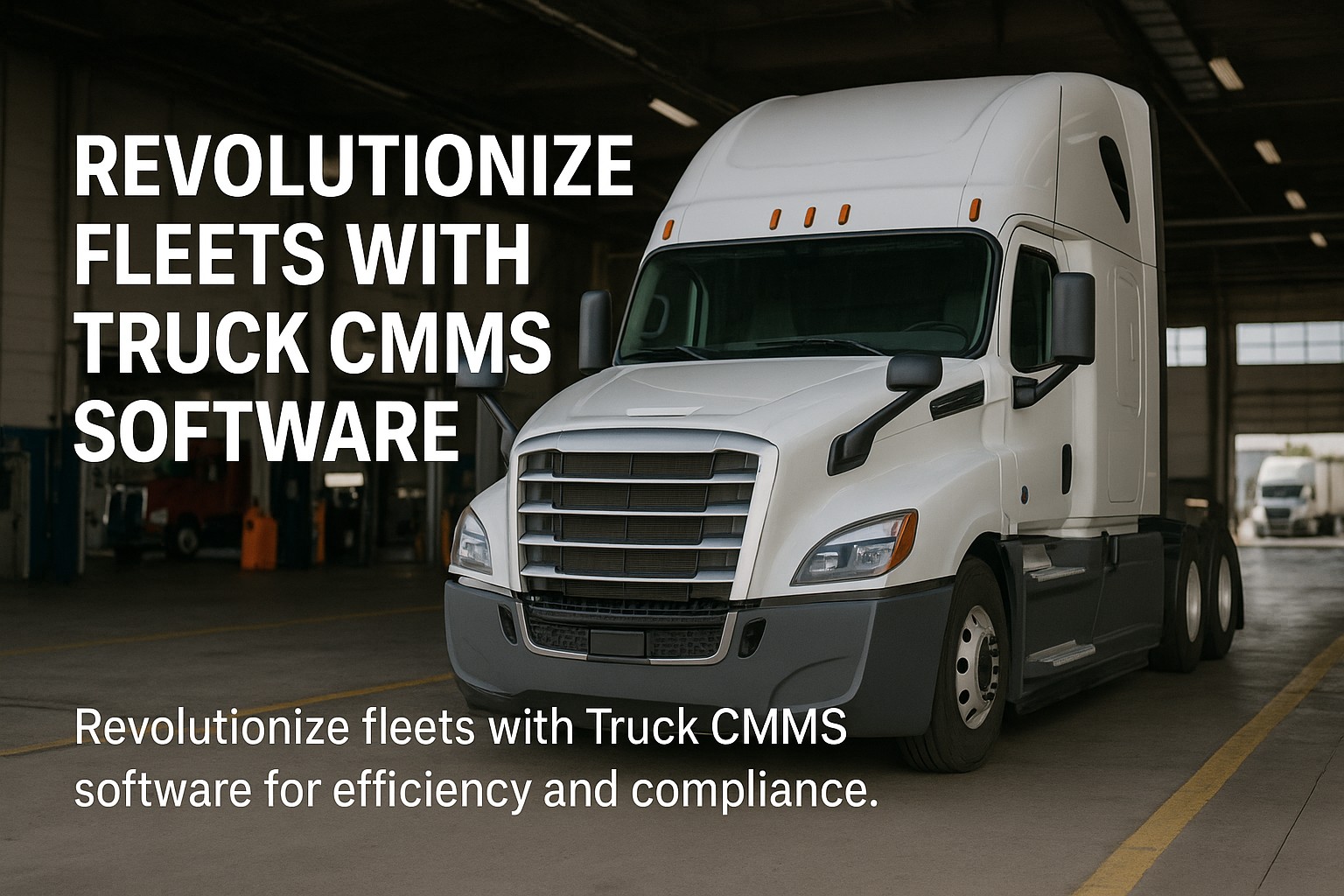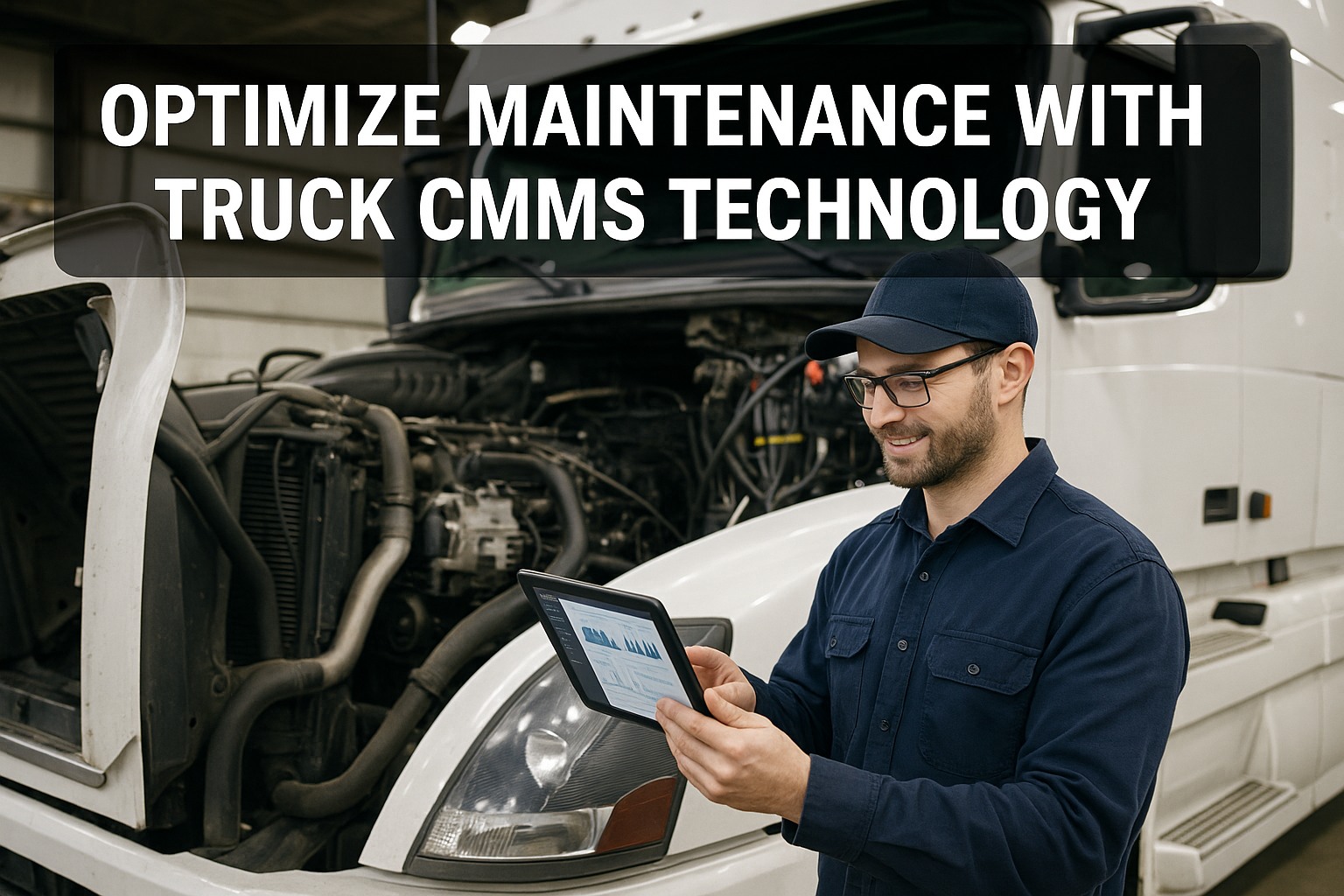Fleet productivity has become the defining battleground for competitive advantage in trucking, where every percentage point of efficiency improvement translates directly to bottom-line results. Modern Computerized Maintenance Management Systems (CMMS) are revolutionizing fleet operations by reducing vehicle downtime by 35%, increasing technician productivity by 47%, and delivering measurable improvements in asset utilization. This isn't just about working harder—it's about leveraging intelligent software to work smarter, transforming maintenance from a necessary evil into a strategic productivity driver.
The numbers tell a compelling story: fleets using advanced CMMS software complete 40% more deliveries with the same number of vehicles, reduce maintenance labor hours by 28%, and achieve 95% schedule adherence for preventive maintenance. These gains compound over time, creating a virtuous cycle where improved maintenance leads to better reliability, which enables more aggressive scheduling, ultimately driving revenue growth of 15-20% without adding a single truck to the fleet.
Traditional maintenance approaches create hidden productivity drains that silently erode profitability. Consider that unplanned breakdowns cost fleets an average of $760 per day in lost revenue, while inefficient work order management wastes 3 hours of technician time daily. Forward-thinking fleet managers are discovering that modern CMMS platforms eliminate these inefficiencies through automation, predictive analytics, and real-time optimization that keeps trucks rolling and technicians focused on value-adding activities.
CMMS: The Productivity Engine for Modern Fleets
At its core, CMMS transforms fleet maintenance from a reactive scramble into a proactive, data-driven operation. By centralizing all maintenance activities, automating routine tasks, and providing actionable insights, CMMS software creates a productivity multiplier effect that impacts every aspect of fleet operations.
Key Productivity Features of Advanced CMMS:
- Intelligent Work Order Management: Automatically prioritize and assign tasks based on urgency, technician skills, and parts availability, reducing idle time by 60%
- Predictive Maintenance Analytics: Identify potential failures before they occur, preventing 75% of unplanned breakdowns that destroy productivity
- Mobile-First Workflows: Enable technicians to access information, update status, and order parts from anywhere, saving 2 hours per day
- Real-Time Fleet Visibility: Track vehicle location, maintenance status, and availability instantly to optimize dispatch decisions
- Automated Scheduling Engine: Optimize maintenance timing to minimize operational impact while ensuring compliance
The Productivity Multiplication Effect:
Leading CMMS platforms create compound productivity gains by connecting previously siloed operations. When maintenance, dispatch, and finance systems communicate seamlessly, decision-making accelerates, redundancies disappear, and the entire operation moves faster with greater precision. Fleets report 25% improvement in overall operational efficiency within 90 days of implementation.
Productivity Killers in Traditional Fleet Maintenance
Understanding the hidden productivity drains in conventional maintenance approaches reveals why CMMS adoption has become critical for competitive fleet operations. These inefficiencies compound daily, creating massive opportunity costs.
Reactive Fire-Fighting
Without predictive capabilities, fleets waste 40% of maintenance resources on emergency repairs that could have been prevented, disrupting schedules and destroying productivity.
Paper-Based Chaos
Manual work orders and paper trails consume 3+ hours daily in administrative tasks, while critical information gets lost, delaying repairs by an average of 18 hours.
Parts Inventory Waste
Poor inventory management leads to 30% overstocking while still experiencing stockouts, forcing technicians to wait hours or days for critical components.
Data Blindness
Without real-time analytics, managers make decisions based on gut feel rather than data, missing optimization opportunities worth $50,000+ annually per fleet.
Maximizing Fleet Productivity Through CMMS
Modern CMMS platforms attack productivity from multiple angles, creating synergies that transform maintenance from a cost center into a competitive advantage. The key lies in understanding and optimizing each productivity lever.
Vehicle Availability Optimization
The most direct path to productivity improvement is maximizing vehicle uptime:
- Predictive Failure Prevention: AI algorithms analyze sensor data to predict failures 30-45 days in advance, allowing scheduled repairs during off-hours
- Optimized PM Scheduling: Batch compatible maintenance tasks to reduce total shop visits by 40% while improving component life
- Rapid Diagnostics: Integration with telematics provides instant fault code analysis, reducing troubleshooting time by 65%
- Mobile Maintenance Units: Route optimization for field service reduces vehicle deadhead to shops by 50%
Technician Productivity Enhancement
CMMS dramatically improves how technicians spend their time:
- Digital work orders with complete repair history eliminate 45 minutes of research per job
- Automated parts ordering ensures components are ready when vehicles arrive
- Mobile access to technical documentation reduces trips to the office by 80%
- Skill-based routing ensures the right technician handles each job on the first attempt
Real-World Productivity Gains
A 150-truck fleet implementing comprehensive CMMS achieved:
- 35% reduction in vehicle downtime (gained 52 productive days per truck annually)
- 47% increase in technician productivity (equivalent to adding 4 technicians)
- 28% reduction in maintenance costs through optimized scheduling
- $3.2 million additional revenue from improved vehicle availability
Measurable Impact of CMMS on Fleet Productivity
The productivity improvements delivered by modern CMMS platforms create competitive advantages that compound over time, transforming fleet operations:
35%
Reduction in vehicle downtime
47%
Increase technician productivity
40%
More deliveries same fleet size
$3.2M
Additional annual revenue
Strategic CMMS Implementation for Maximum Productivity
Achieving transformational productivity gains requires more than software installation—it demands strategic implementation focused on rapid value realization and sustainable adoption.
Phase 1: Productivity Baseline & Quick Wins (Week 1-2)
- Measure current productivity metrics: vehicle utilization, technician efficiency, downtime costs
- Identify biggest productivity bottlenecks through data analysis and staff interviews
- Configure automated work order routing to eliminate dispatcher bottlenecks
- Implement mobile DVIR to save drivers 20 minutes daily
Phase 2: Core System Optimization (Week 3-4)
- Import historical maintenance data to enable predictive analytics
- Set up automated PM scheduling based on real-time mileage and engine hours
- Configure parts inventory management with automatic reorder points
- Integrate telematics for real-time vehicle health monitoring
Phase 3: Advanced Productivity Features (Week 5-6)
- Deploy mobile apps to all technicians with training on productivity features
- Activate AI-powered failure prediction and automated work order generation
- Implement dynamic scheduling that optimizes maintenance around operations
- Create productivity dashboards for real-time performance monitoring
Phase 4: Continuous Improvement (Week 7+)
- Establish weekly productivity reviews using CMMS analytics
- Fine-tune algorithms based on actual performance data
- Expand integration to dispatch and customer systems
- Scale successful practices across all locations
Selecting CMMS for Maximum Productivity Impact
Not all CMMS platforms deliver equal productivity gains. When evaluating solutions, prioritize these productivity-enhancing capabilities:
- AI-Powered Intelligence: Machine learning that improves predictions and recommendations over time
- Seamless Integration: Open APIs connecting with telematics, dispatch, and financial systems
- Mobile Excellence: Native apps that work offline and sync automatically when connected
- Real-Time Analytics: Dashboards showing productivity metrics updated every 15 minutes
- Workflow Automation: Configurable rules that eliminate manual tasks and decision delays
- Scalable Performance: Cloud architecture that maintains speed as data volume grows
Transform Fleet Productivity with Intelligent CMMS
The productivity gap between fleets using modern CMMS and those relying on traditional methods continues to widen. Every day of delay means lost revenue, wasted resources, and competitive disadvantage. Leading fleets have already made the transition, reporting not just incremental improvements but transformational gains that redefine what's possible in fleet productivity.
CMMS represents more than maintenance software—it's a comprehensive productivity platform that touches every aspect of fleet operations. By eliminating waste, automating routine tasks, and providing predictive insights, these systems enable fleets to achieve more with existing resources while positioning for sustainable growth. The question isn't whether to implement CMMS, but how quickly you can capture these productivity gains before competitors pull further ahead.







